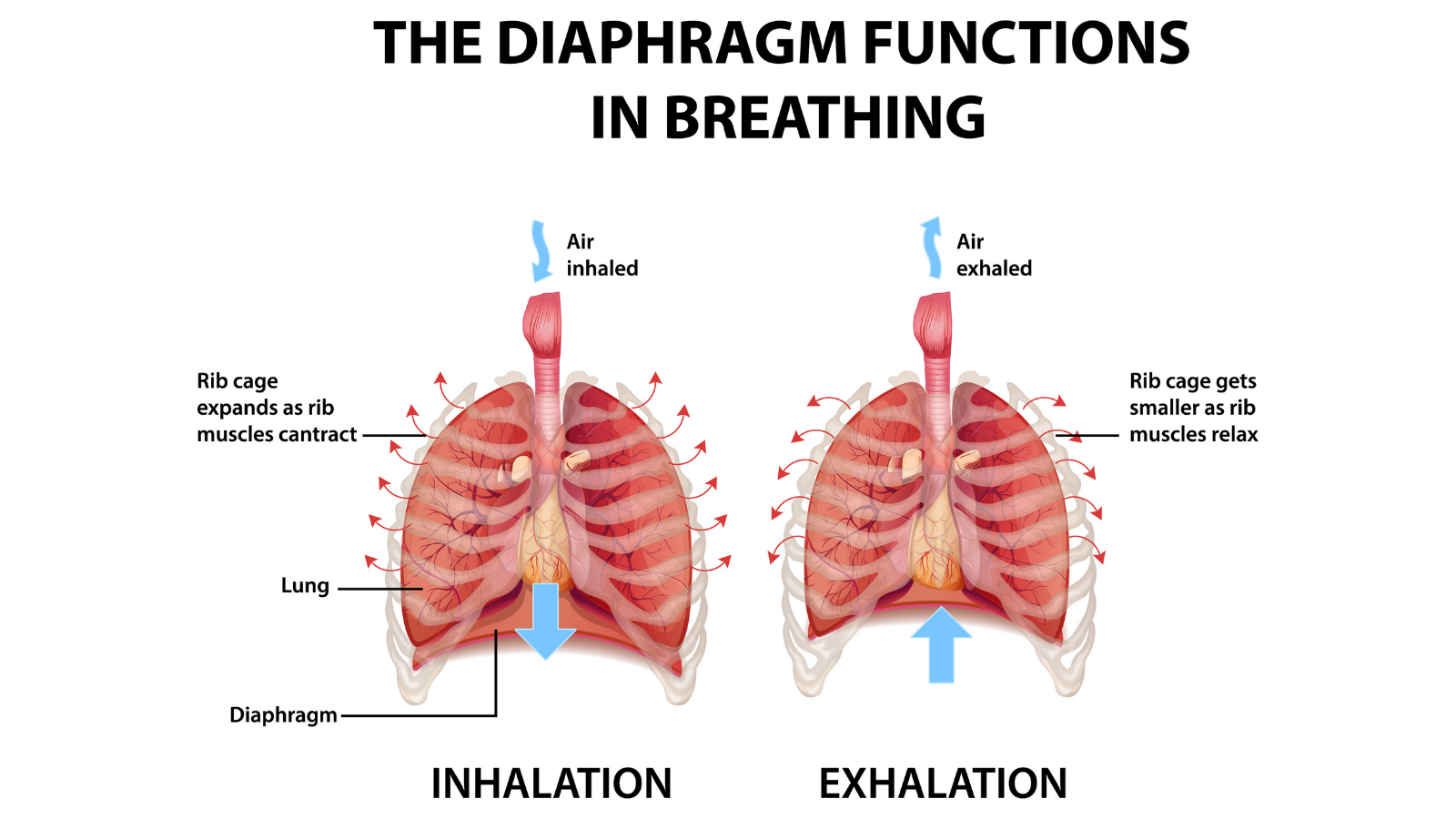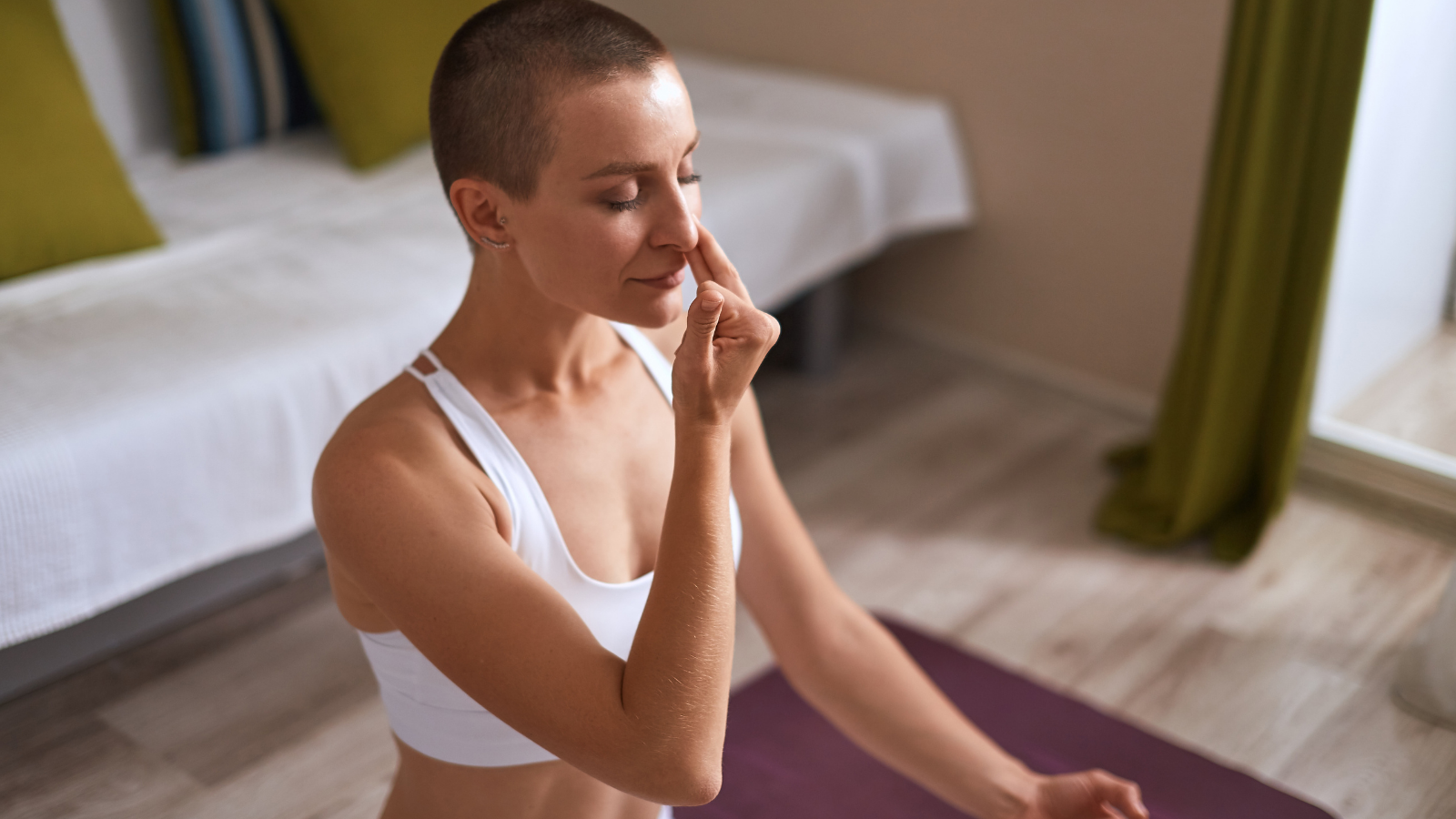View basket (0 items $0.00)

Doug Keller: The Vagus Nerve & Healthy Breathing
Breathing seems simple—you breathe in and you breathe out. But there are patterns to our breathing that are of our own creation. These patterns are often artificial strategies for dealing with events in our lives.
Unfortunately, unhealthy breathing patterns affect us adversely in numerous ways. In particular, it is increasingly recognized that deep diaphragmatic breathing is one of the best ways to ensure healthy vagus nerve functioning.
In this interview, Eva Norlyk Smith, Ph.D. of YogaUOnline speaks with yoga therapist Doug Keller to explore the basics of healthy breathing, and how it is connected with vagus nerve modulation. Doug shares best practices for helping students develop more healthy breathing patterns and how to deepen the breath in a natural, non-forced way.
Q. We all know how important the breath is to our health and well-being, especially since we can live without water or food for some time. But when it comes to the breath, we maybe have three to five minutes before we die from lack of oxygen. What impact does breathing – properly and not - have on our well-being?
A. A broad spectrum of health problems are connected to problems with how we breathe. Many diseases, like asthma, are often tied to bad breathing habits. Hyperventilation is one of those breathing problems that impacts six to 10 percent of the population and is a disorder that leads to a lot of diseases.
We hear a lot about the vagus nerve these days and why it's so important. The vagus nerve governs vital processes in the body and modulating the vagus nerve can enable us to modulate nervous system functioning to shift out of a frantic fight-and-flight mode of functioning to a calmer, rest-and-digest mode of functioning.
But what most people don't realize is that the key to healthy vagus nerve functioning is healthy breathing, particularly diaphragmatic breathing.
The ancient yogis were on to this long before the West even discovered the vagus nerve. That's one of the reasons there is such emphasis on learning to work with the breath in the ancient yogic texts.
This is why simple Pranayama practices are so important. They can play a significant role in correcting breathing problems.
These simple breathing techniques that tend to extend the exhalation and also create comfort with pauses in the breath or small Kumbhakas are proven by the scientific community to help and can be beneficial for a wide range of health problems.

I have been practicing and teaching Pranayama as a way to recalibrate people’s breath. The healthier, deeper and longer breath helps people to overcome a lot of problems, including both emotional and mental stresses, as well as physical diseases and symptoms of physical diseases. Pranayama both retrains the breath to make the breath more appropriate to the activity that you’re doing and, at the same time, it puts you in much more conscious contact with exactly how you’re breathing. This helps you catch yourself in the moments in which your breath doesn’t really fit what you’re doing.
Q. Are you saying that a lot of people come to yoga with preexisting breathing imbalances?
A. It’s basically a pattern people develop. As I mentioned one of the most common problems is hyperventilation (over breathing), which has become a habit for many people. This typically happens when you’re doing something active like jogging or doing asana practice. Your breathing rate and depth is going to be different from when you’re doing something else like sitting and meditating or doing a quieter activity.
Stress patterns and habits like sitting at the computer also create improper breathing patterns and we get disconnected from our breath. We don’t realize how much stress we cause for the body and even how many problems we cause for the mind in terms of dizziness or foggy brain syndrome, asthmatic breathing patterns.
Q. What are the challenges of teaching Pranayama breathing?

A. Pranayama is meant to bring people back in touch with their breath and then start to remove the limitations upon the breath that come from that habit. The idea is not to impose new limitations on the breath and force people to do that because the first reaction you get is you don’t feel relaxed. You don’t feel centered. And that’s usually a sign that there’s something going wrong in terms of what you’re doing. Instructors need to, and you need to find a way to introduce this kind of breathing in a way that makes the breath more productive, centering, and relaxing.
The challenge with Pranayama breathing in yoga is basically people try too hard. One of the translations you can give of Pranayama actually means expansion of the experience of the breath. Ayama means to expand or extend, or to widen. And so, the purpose of Pranayama is not so much to control the breath but rather to expand your experience of it.
Q. One of the first things we do when teaching a new student is to try to introduce diaphragmatic breathing or three-part yogic breath. How do you work with that when you teach your students?
A. I think Pranayama always starts with first an element of kind relaxation where you move from an active mind to a receptive or perceptive mind. The difference is in an asana class, you’re following instructions. You’re very active and telling the body to do things. The mind is in command. The shift to Pranayama is to move from that command mode to a receptive mode. Instead of trying to tell people what to do with the breath from the start, which often gets in the way, you have them start to feel exactly how they’re experiencing the breath as it is without putting any conditions on it or directions or rules.
Once they start to tune in to that experience, you can bring people’s attention to the diaphragm, what it feels like to breathe into that part, and what you feel happening in the body.
Q. So, if healthy breathing helps balance the nervous system, it would also make us sleep better, correct?
A. Yes, I find it kind of humorous that the question I get more often than anything else from people is on how to sleep well or what kind of pillow to use. Working with the breath practice, particularly before going to sleep at night, does more than anything else to help you have a deep and restful sleep and to get to sleep quickly. So there are a lot of benefits to doing it.
Q. In your Yoga for Healthy Vagus Nerve Functioning course, you go into this in great detail, correct?
A. Yes, it's so important that people learn more about how simple changes to our breathing patterns can have a profound effect on how we feel emotionally, mentally, and physically. And there are so many yogic approaches to working with the vagus nerve, but most people are not aware of them. It's a very exciting topic.
Featured Courses








